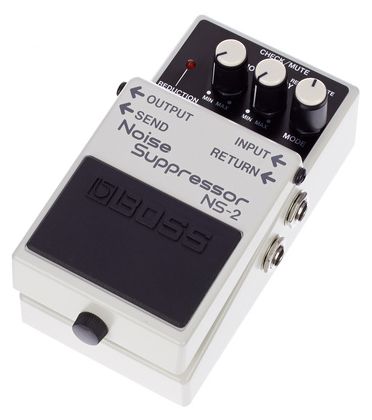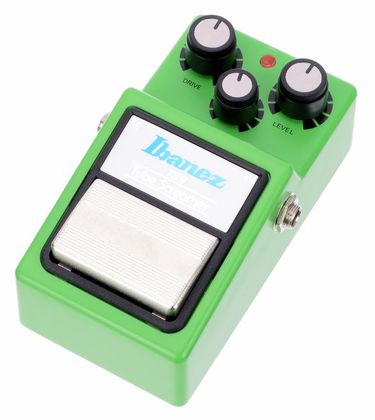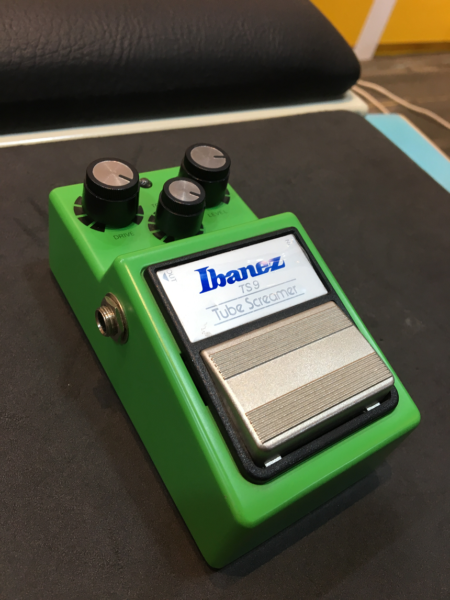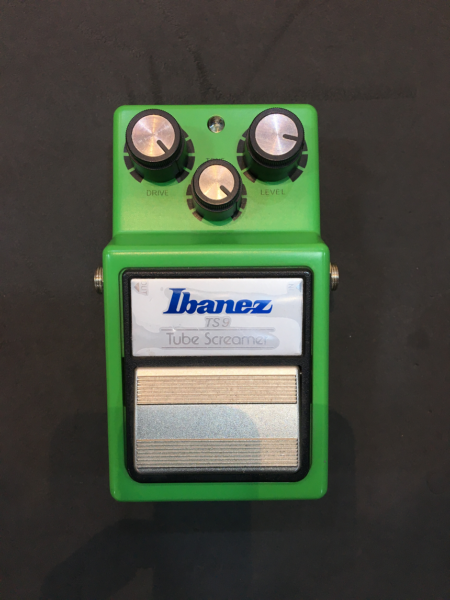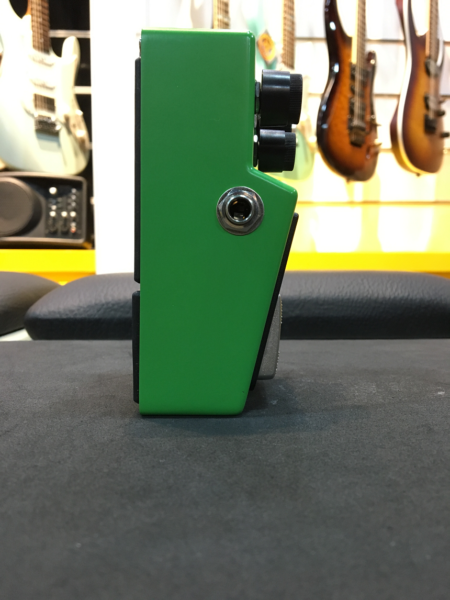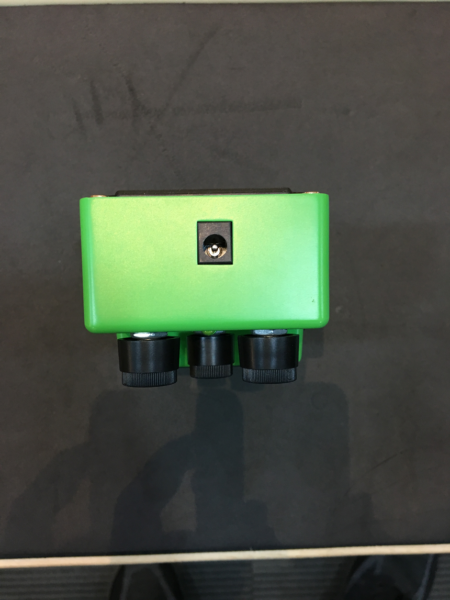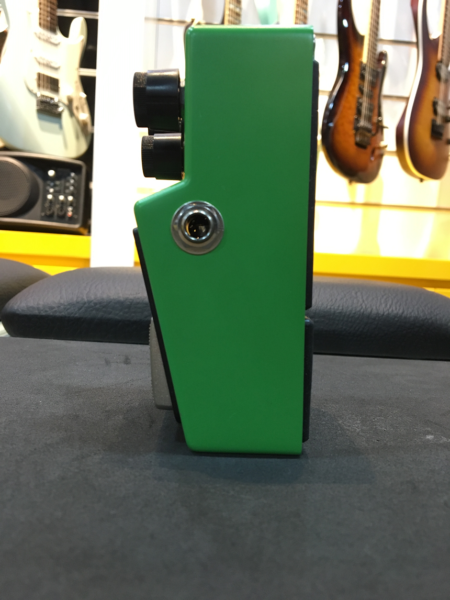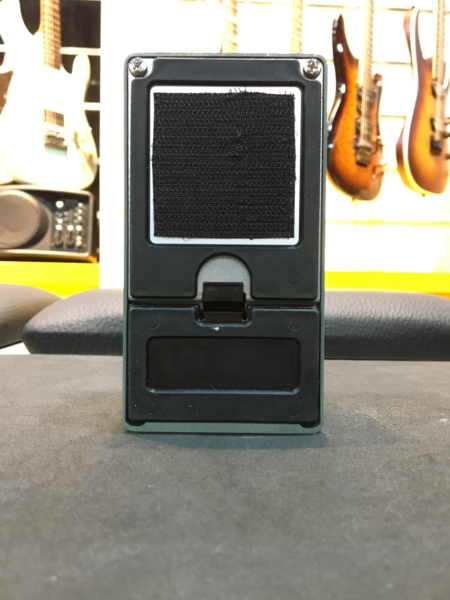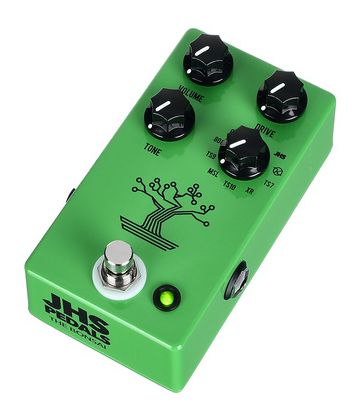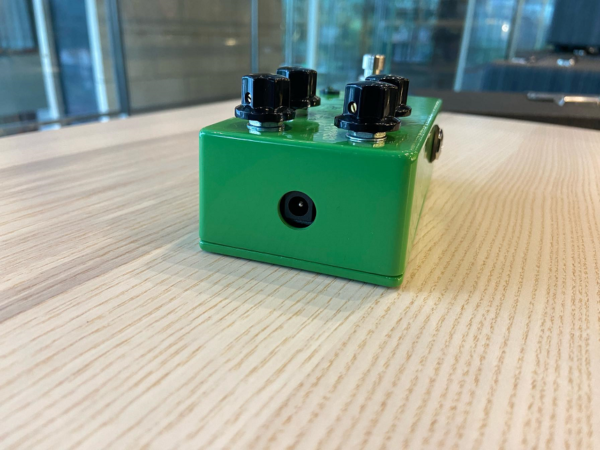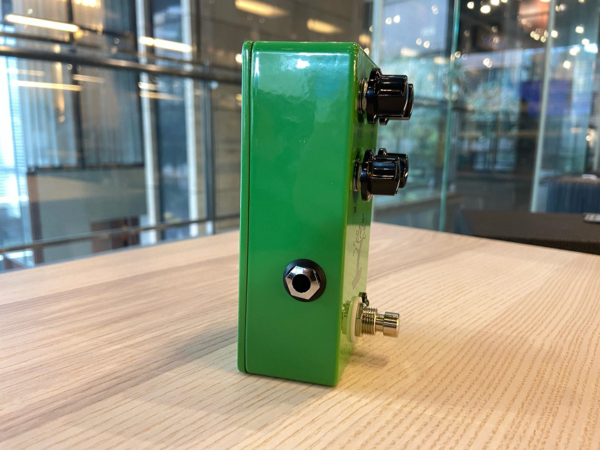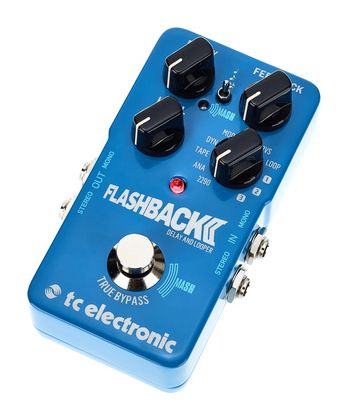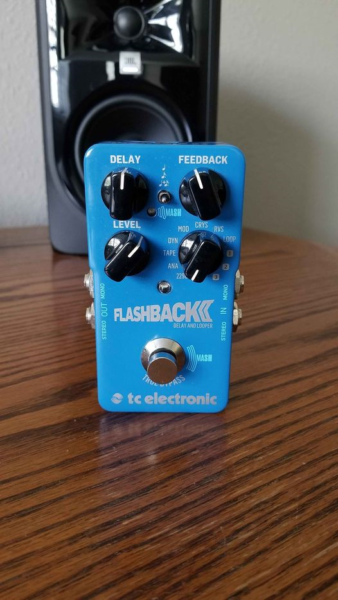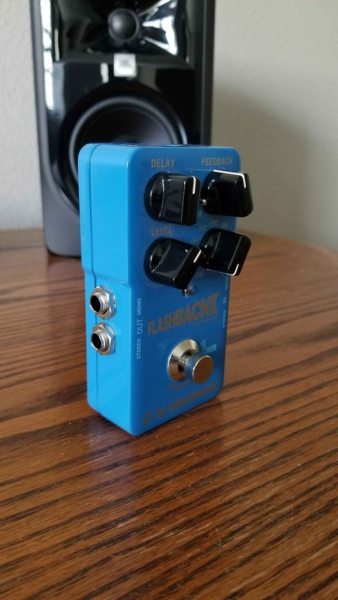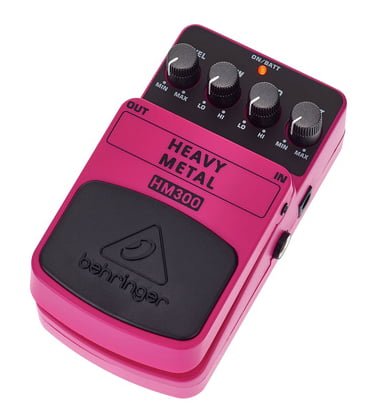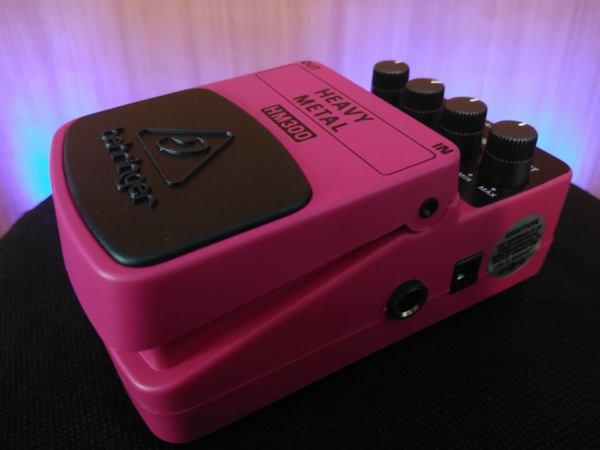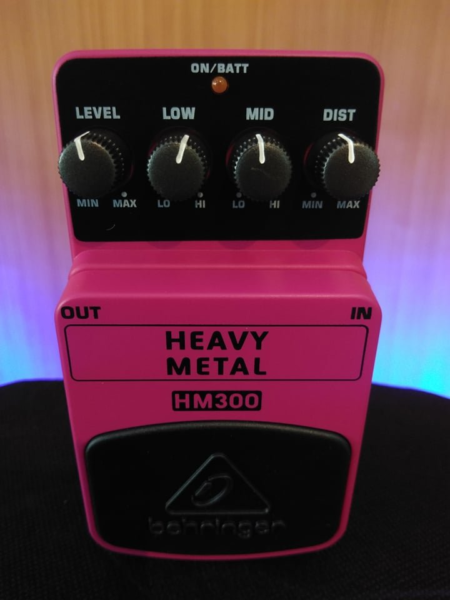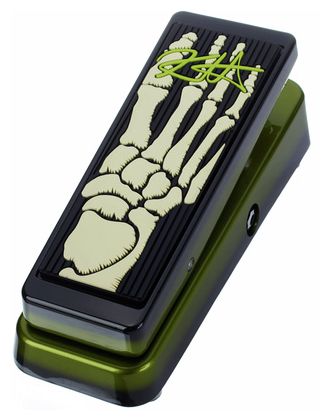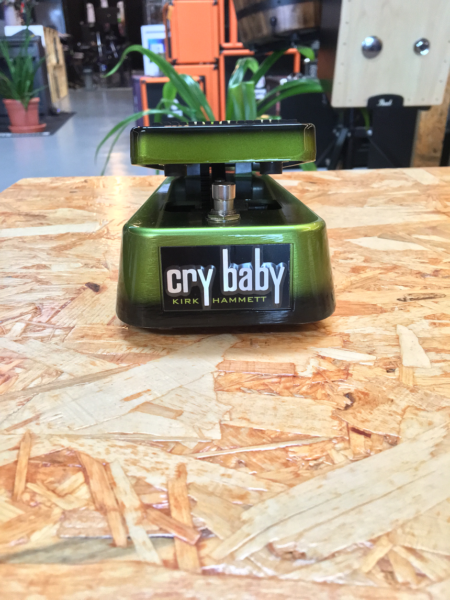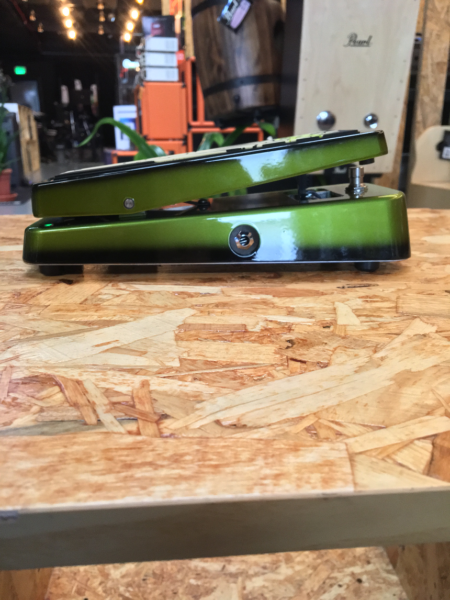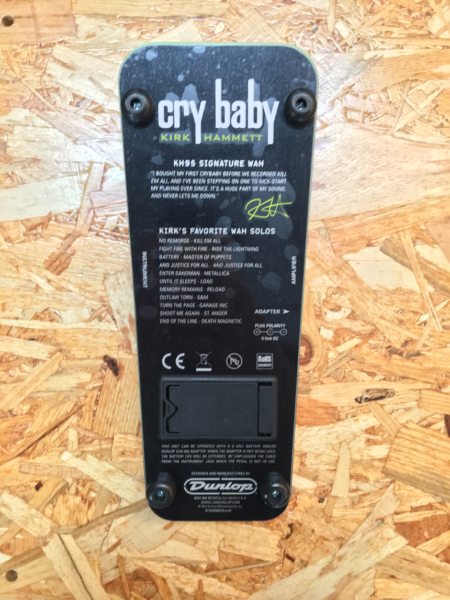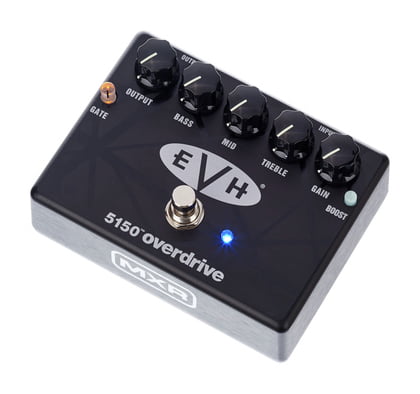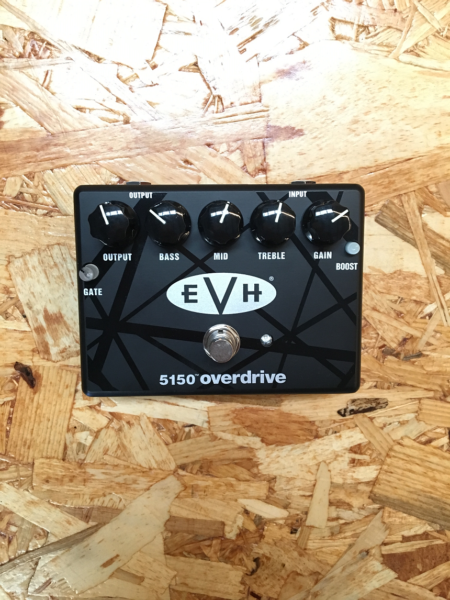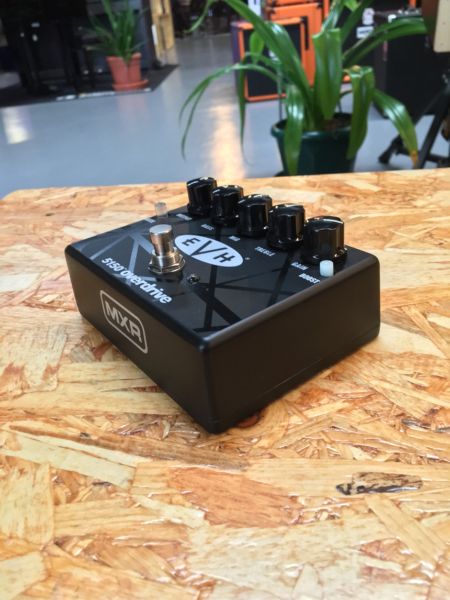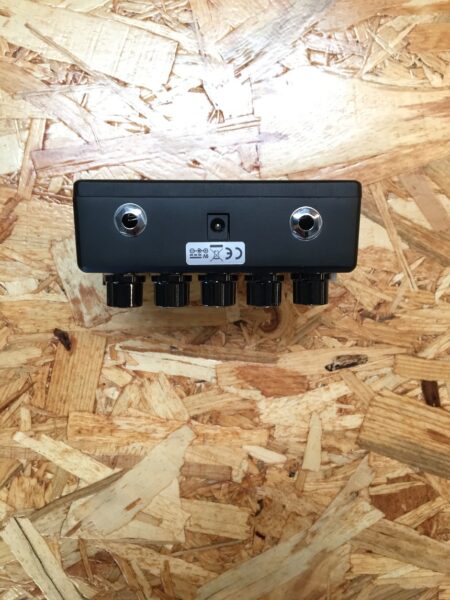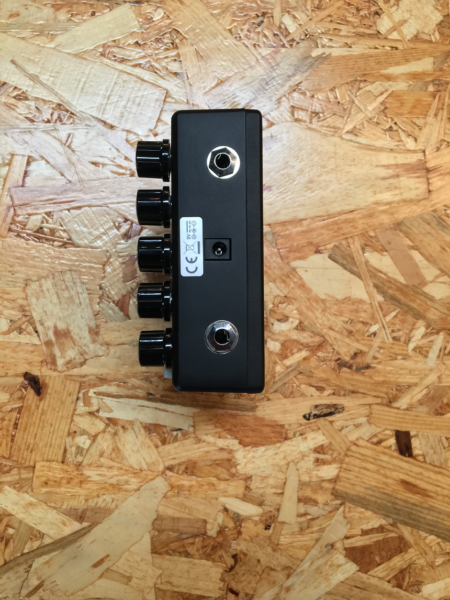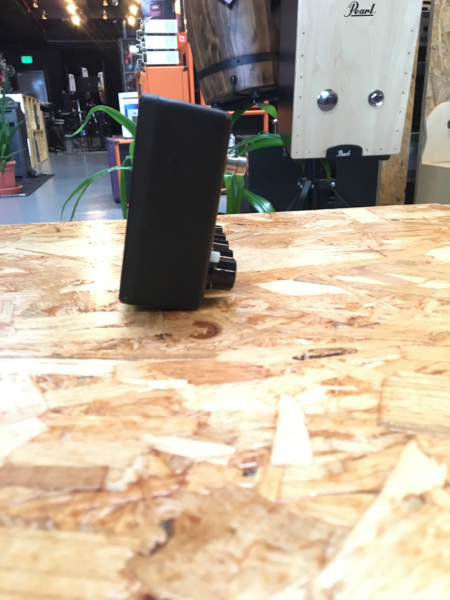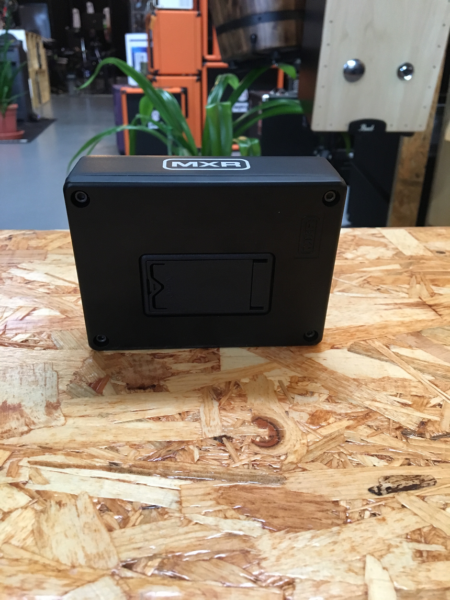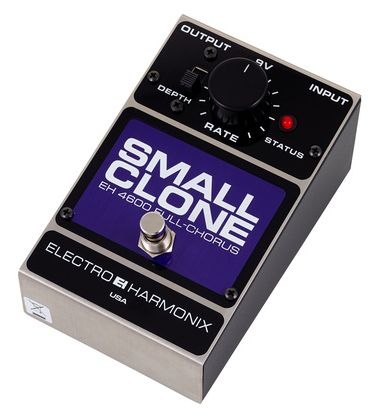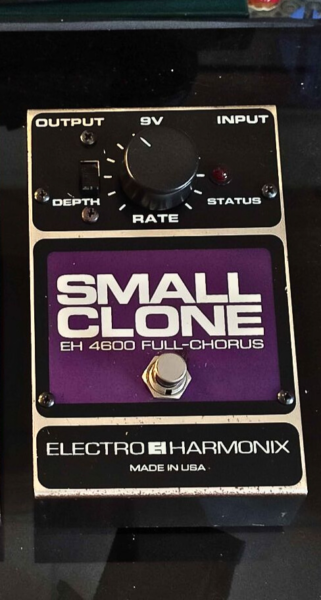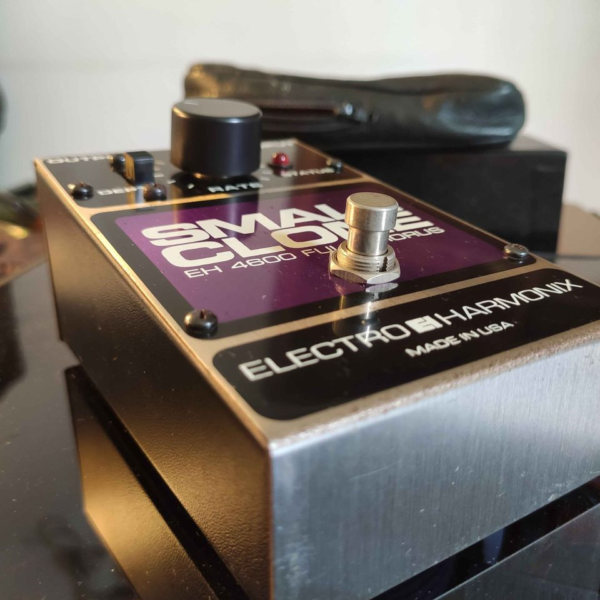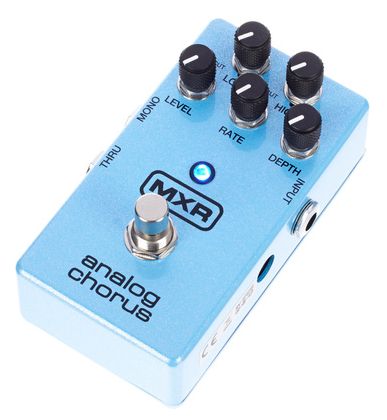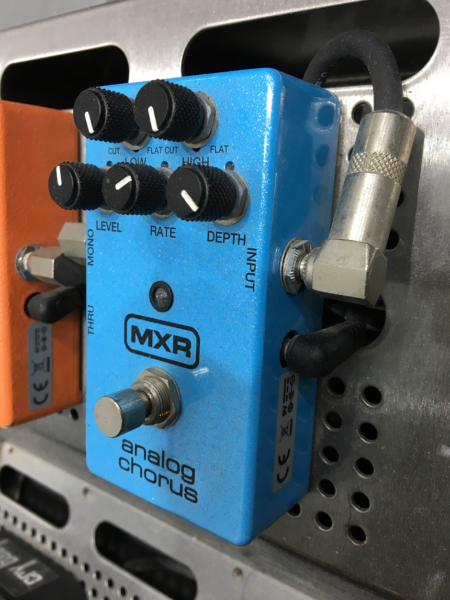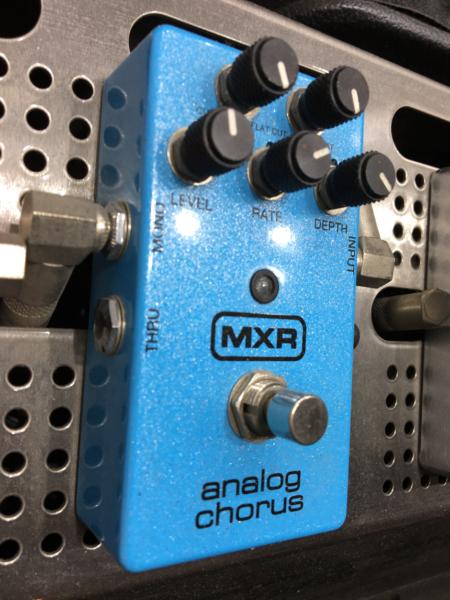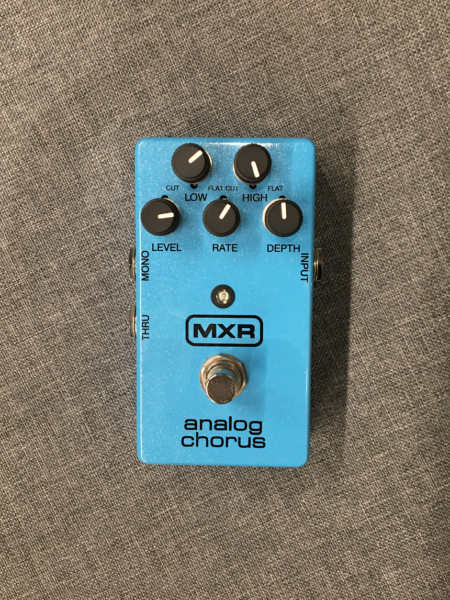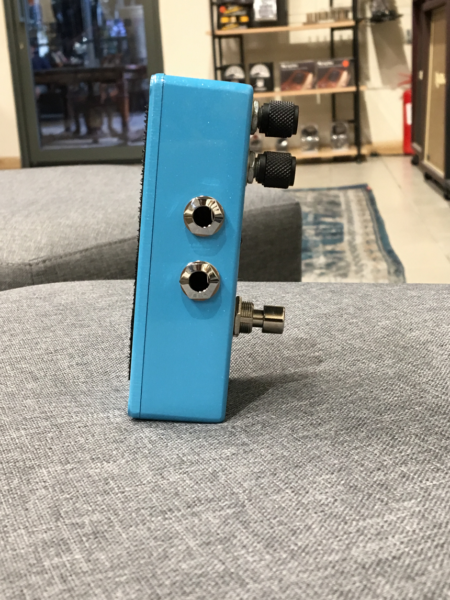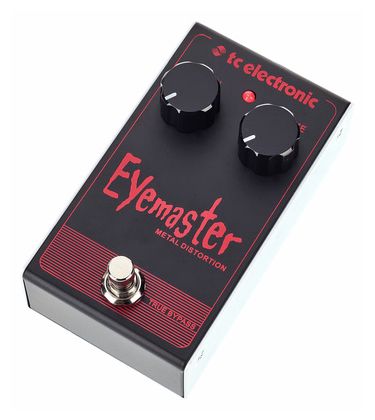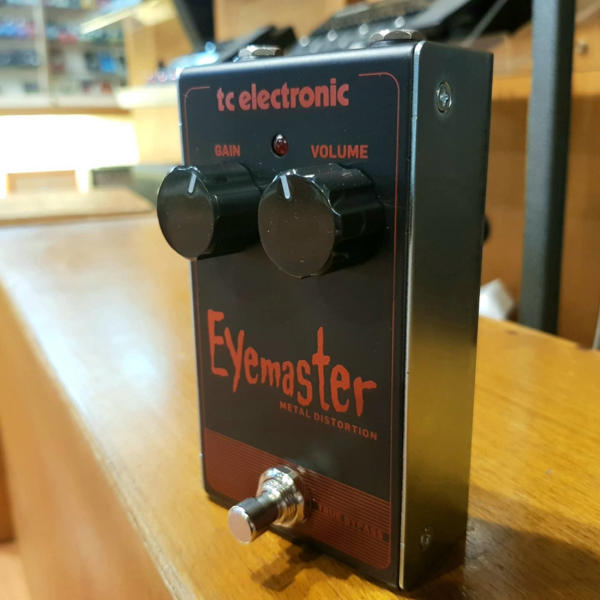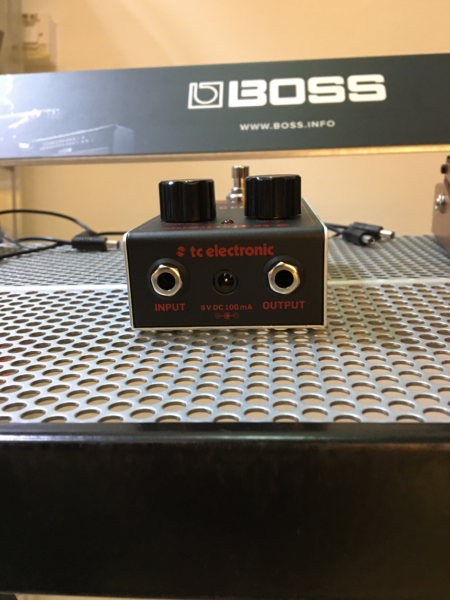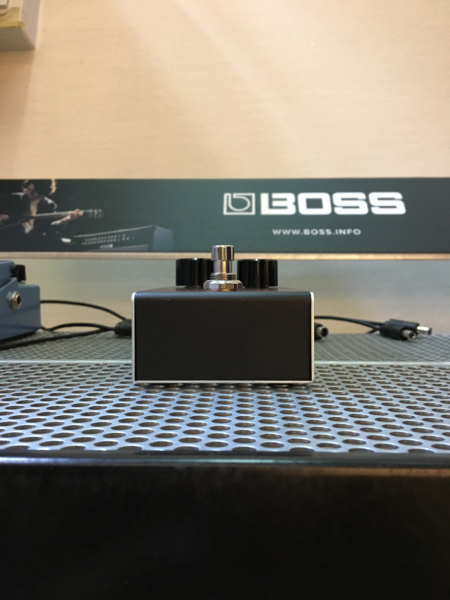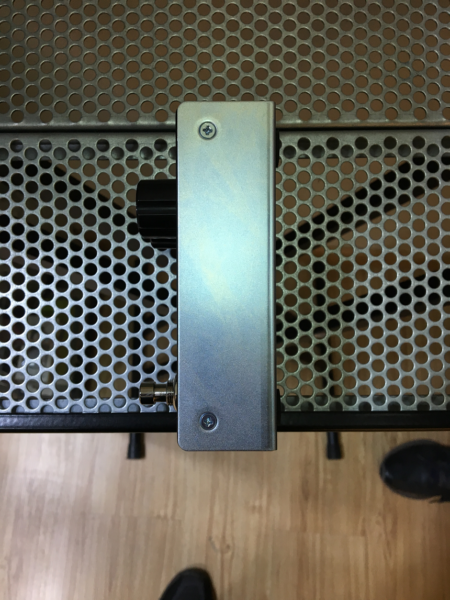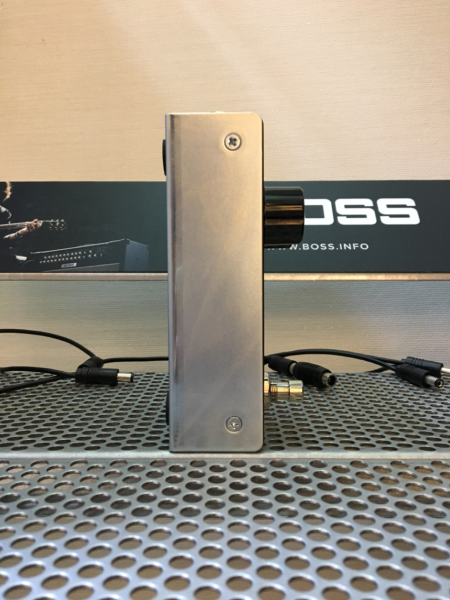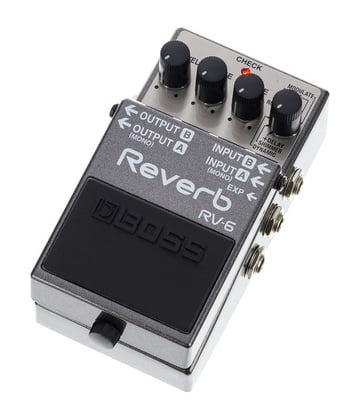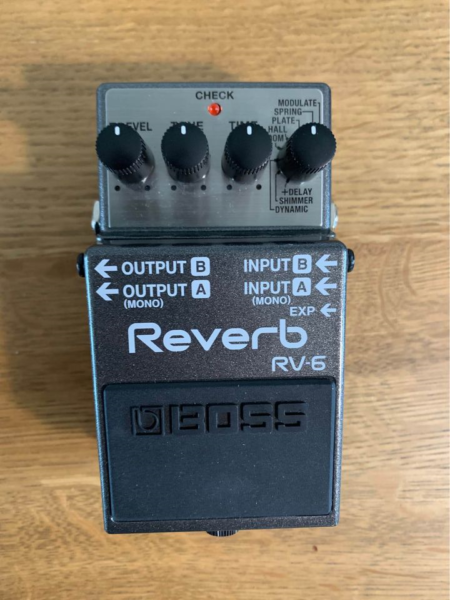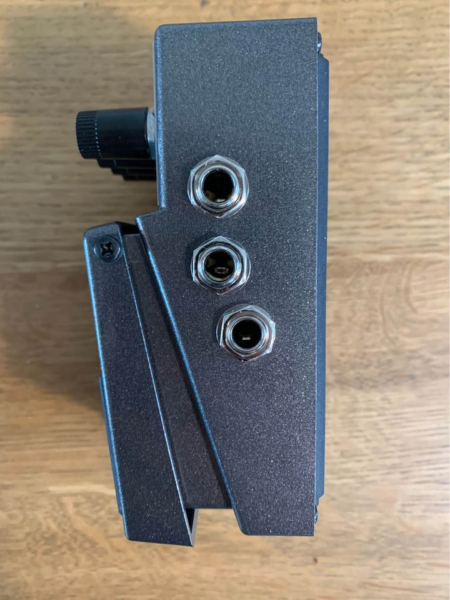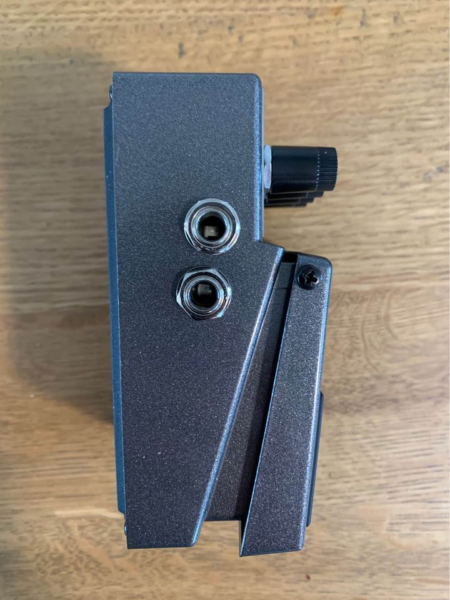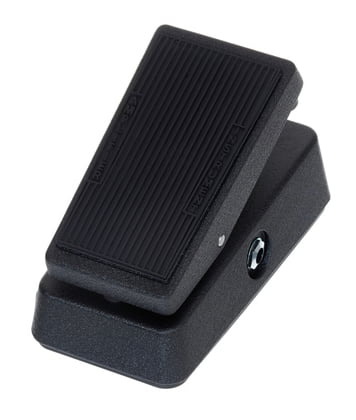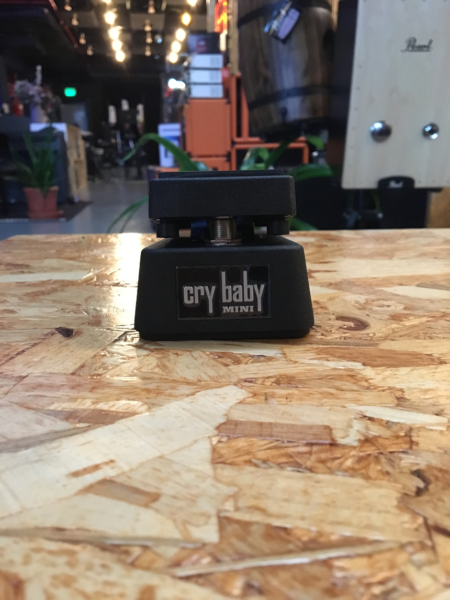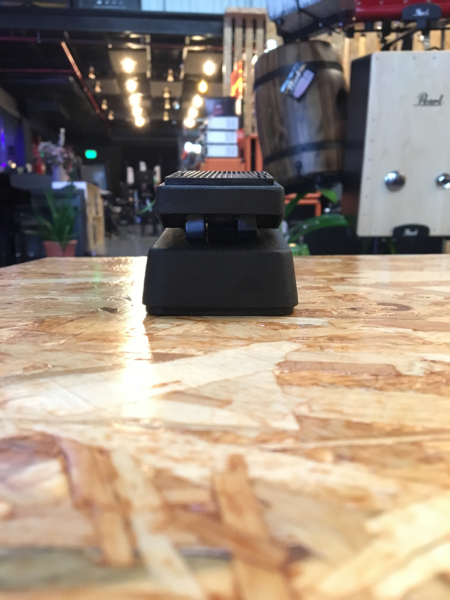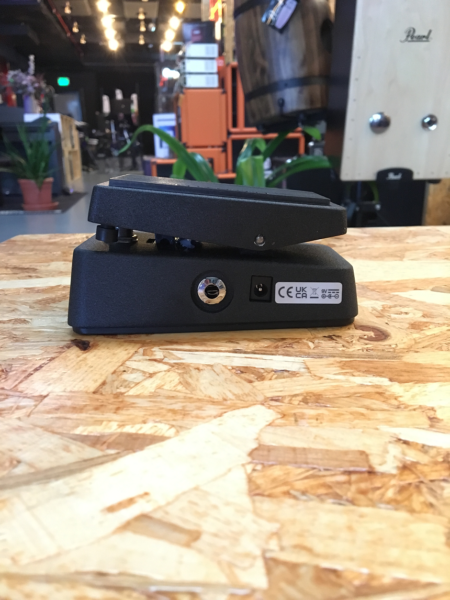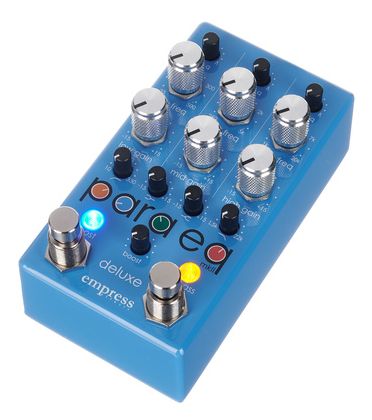Are you looking to get a tone close to Metallica? Today we’re talking about the pedals great to achieve Metallica’s tone.
In this day and age, given how many solutions are on the market and how much information we’ve heard from Metallica about their tones, and how they’ve come to create that touch when it comes to combinations of pedals, amps and guitars, we can be very creative about trying to mimic their sound.
Metallica is a metal band famous for its pounding, violent music. Kirk Hammett, the band’s guitarist, is considered one of the most important guitarists of all time. Metallica is well-known for its use of various guitar effects, including delay, distortion, and wah.
The heavy, distorted tone characteristic of Metallica’s music is largely achieved by using distortion, an effect that adds grit and biting to the guitar’s sound.
Guitarists have increasingly used effects pedals to craft their tones. Yet, remember that there is such a thing as too much of a good thing. Using too many effects can cause your guitar to blend in with the rest of the band’s sound. Like any other tool, guitar effects are used sparingly and with trial and error to discover the tone that works best for you.
In a nutshell, here are our picks:
What Tones Do Metallica Commonly Use In Their Music?
As with any other band that uses distortion, Metallica often has classic tones. The clean tone on “One” is about as close to the original as you can get, and the distortion tones are just as genuine, thanks in large part to James Hattfield’s down-picking on each riff.
Metallica’s sound is characterized by a lot of gain and bass, some somewhat high treble for definition, and a comparatively low midrange. Nonetheless, this EQ is dynamic and adapts to the music at hand, particularly during the instrumental interludes.
What is Metallica famous for?
Metallica’s dependability and distinctive sound have made them a major creative force in the heavy metal scene. Metallica’s famed speed metal style, lofty, serious lyrics, and openness to experimenting with complicated structure genres of music all served as inspiration for so many bands.
Metallica’s impact stems in no small part from the band’s willingness to push the boundaries of heavy metal. A more somber aspect of heavy metal is displayed in Metallica’s “One,” which reflects the band’s diverse musical interests.
Very intricate, the song’s musical backdrop complements the deep meaning of the lyrics. The lyrics are appropriate to the music because the beat determines the tempo at which the words are sung. The lyrics’ intended meaning complements the music beautifully, and how they are presented enhances their impact.
Long, soothing orchestral passages are followed by lyrics delivered with a similar sense of serenity and philosophy to achieve these goals. According to the book, one of the defining features of the band was its speed metal, which “refers to the quick tempos and blistering guitar parts.”
Metallica is a fantastic group that has influenced countless other bands and styles of music beyond just heavy metal. Metallica’s influence can be seen in the music of many bands, including many others in the heavy metal genre.
Top 12 Pedals For Metallica Tone 2024
1. Boss NS-2 Noise Suppressor
The NS-2 efficiently removes any background hum or buzz in the input signal without altering the source’s tone.
When it comes to getting the appropriate equipment at the right price, Boss is the firm to trust. A noise gate pedal is crucial to many high-quality guitar setups, but you will find little discussion online. Boss produces one of the best noise gate pedals you have seen recently, for whatever reason. They’ve done it again with minimalist, functional design and failsafe electronics.
Key Features:
- Simple Layout
There are only three primary knobs on the pedal’s interface, making it very easy to use. Adjusting the threshold knob determines how loud an input must be for the gate to activate. As this dial is cranked more clockwise, a stronger signal is required to maintain the gate open.
You can close the gate more quickly or slowly by using the “decay” knob. A higher knob setting will result in a more rapid gate closure. In theory, you may achieve its most natural sound by setting the threshold to zero and the decay to infinity, while the opposite combination produces an intense and djenty tone.
The sound you want to achieve and the available equipment are factors to consider.
- Mod Knob
You can switch between the pedal’s several modes by using the mode knob. Reduction is the default setting; thus, the gate is always on when the pedal is depressed and off when the pedal is released. When the pedal is “engaged,” the noise gate is active, and when it is “disengaged,” the input signal is damped.
Hence, the pedal is always engaged in silent mode, and the red light at the top does not show that the pedal is switched on but rather that the mute function is engaged. This pedal has a secondary red light for clarity, and it’s labeled “reduction.”
When this indicator is lit, the gate is active and can be used. As you continue to play, you will see that the reduction light gradually fades in and out. Here, the light serves as a live feed of the gate’s operational status.
When you’re playing, the reduction light will gradually dim as the gate opens and let the signal in. The reduction light gradually comes back on as soon as you put down the instrument, and the gate closes again.
- Double The Connectivity
Unlike other noise gates, which only feature an input and an output, this pedal includes all four connections plus a send and a return, thereby creating its loop into which you can insert all or most of the effects you want the gate to affect.
In this case, Instrument Input to Return is the simplest possible case. Then, if there is something you do not want gated, put it after the Output. This setup gives you a nice degree of freedom, and it’s especially useful if you’re working with an amplifier that does not include an effects loop.
You can achieve much precision and nuance in the signal route by isolating the effects of gain from those of modulation.
- Power
The pedal features a 9v OUT in addition to the regular 9v IN, making it possible to extract power directly from such a pedal and route it into another device on your board, as with some of Boss’s other “utility” pedals.
If you have a limited number of 9-volt outlets on your power strip or want to keep those outlets for pedals that require a lot of power, this is a great function. Individuals who own the Boss tuner pedal probably know about this function already.
Character & Sound:
To provide you with an idea, this is the pedal turned down. Compared to the image that you skipped over, everything seems slightly muted. The most attenuation occurs in the upper-frequency range, which is unfortunate because it is in this range that most noise interference occurs.
This should be taken into account while analyzing the full signal route. As the purpose of a noise gate is to filter out unwanted background noise, some “tone” (i.e., desired signal) would inevitably be muted in the process. Compressing the signal as it resists the gate can give it new life, and you can use an equalization pedal in other situations.
But there are several other acoustic considerations to contend with in a live setting, so giving up some tone for an amp that is less hissy can be worth it. The recording studio is a different world, and the DAW you or your engineer is using will likely have a wider variety of gating and reduction controls.
Pros:
Everyone from hobbyists to professional musicians on the globe tour uses this pedal as their go-to noise gate. It’s easy to see why this noise suppressor pedal has reigned supreme for so long; its simple operation with a wide range of adjustment choices and flexible connectivity makes it a solid choice for everyone from a traditional blues guitarist to a metal slayer.
A more transparent and natural-sounding noise suppressor than anything else available in its price range, it eliminates hum, feedback, and string noise while leaving the signal untouched.
Cons:
It functions well now, but there is an odd noise as it dies out; this is known as digital lingering. Since it features a feedback loop, you can chain all the effects you use in front of your amp back into the pedal and then through the Ma/2 to your guitar.
In addition, the fact that you can’t use the loop for your amps’ loop means it is largely useless. In addition, the noise gate shuts off all attacks initially, with no way to adjust the attack or speed it opens up.
2. Ibanez TS9 Tube Screamer
The Ibanez TS9 Tube Screamer is arguably the most well-known effects pedal ever made.
Since its introduction as the TS808 in the late ’70s, numerous musicians’ performances have been enhanced using Tube Screamers. Many iterations, including the now-iconic Ibanez TS9 Tube Screamer, have followed.
The Tube Screamer, like many overdrive pedals, is meant to add a bit of grit and crunch to your sound. The TS9, unlike other overdrive pedals, is designed to enhance your existing guitar tone rather than replace it. The TS9 is an easy-to-use effects pedal with three knobs: Drive, Tone, and Volume.
Key Features:
- Controls
The Tube Screamer’s ease of use is one of its many strengths. The three simple knobs (drive, level, and tone) make it easy for any musician to get a good sound out of it. Use the drive dial to find crunchy, bouncing rhythm textures, or blast it for a little extra boost to get you through that big solo.
For an added “always on” bite and texture, many players park the drive low but leave the pedal on. The level slider is like a global volume knob. After all that, you can adjust the tone to change the overall tone of your sound.
Leaving it below noon provides a more level, balanced EQ palette, while dimming the knob highlights the TS9’s midrange assault and snarl, thereby functioning as a highlighter for the Tube Screamer’s particular tone.
- Clean Boost
Turning the volume on an overdrive pedal can generate some excellent clean boosts, but none can compare to the sound of an Ibanez TS9 Tube Screamer. TS9 still offers a slight overdrive at zero, with the tone unchanged from a clean boost-like circuit.
Once engaged, this pedal consistently adds grit to your clean sound on demand.
- Circuit
The TS-9’s potentiometers are attached to the circuit board using insulated copper-stranded wire, just like the old-school pedals. Potentiometers in many mass-produced pedal effects today are either hardwired to the circuit boards or connected to them through thin ribbon cables resembling those used in personal computers.
These alternatives are viable ways to reduce production costs, but they complicate maintenance and replacement in the long run. The fact is, the TS-9 reissue was wired the “old school” way. In addition to its wiring, the TS-9 demo unit’s solder connections and the input/output connectors were both of high quality.
Character & Sound:
If you’re a guitarist thinking about picking one up, know that it will give a lot of character to your tone and that it’s the furthest thing from transparent distortion and drive pedals that are now trendy. When you turn up the TS9 reissue’s tone and drive controls, it produces a strong roar that turns into a hard-edged distortion.
There is an abundance of crunchy, quick rhythm textures and bright, powerful solo sounds. This device also produces excellent edge-of-breakup tones at lower volume settings, making it well-suited for blues and mellower rock.
Many players may also utilize this as a clean boost, with the gain decreasing to the bottom. It adds a pleasingly gritty edge to otherwise plain clean signals. When the volume is turned up, the sound becomes distorted and reminiscent of feedback (something hard rock and metal players will appreciate).
Pros:
It’s easy to see why this classic pedal is so beloved. The list of celebrities who have used it over the years speaks volumes about its quality. The pricing of the TS9 Tube Screamer is the most shocking aspect. To sum up the pros and drawbacks, this price is a steal. You can go right with this pedal; it will enhance your tone and provide you with various controls, all without breaking the bank.
Cons:
It is not a true bypass. It removes tone from your signal when it is disengaged, also known as when it is turned off. Some people may argue that it is not significant enough to matter, but if it is significant enough to be noticed, it is substantial enough to matter.
3. JHS Bonsai Overdrive
The JHS Bonsai is to screaming green overdrives what the Muffuletta was for massive fuzzes.
Attach the Bonsai to your board, and forty years of effects will be at your feet. You can select from 9 distinct audio textures. The effect pedal is not a modeler, containing the same parts as the original instruments. The Bonsai’s rotary control is a duplicate of the classic pedal’s circuitry, routing your guitar signal through it when you select a mode. This one is like getting nine overdrive pedals in one convenient box.
Key Features:
- Rotary Knob
In the vein of the Muffuletta, this pedal features a single rotating knob that allows you to select from nine types of classic, vintage, rare, or hard-to-find Screamers. Creating the Bonsai was like conducting an archaeological dig into the past of this circuit as we analyzed hundreds of iterations, tweaks, and replications.
During it all, Josh chose nine of his favorites, and we meticulously recreated each pedal’s last element and function. One of the trickiest parts of this endeavor was taking into account component drift, which occurred because many of the pedals were decades old, and the system components had wandered from their original values.
- Not A Mod Box
Utilizing an Audio Precision analyzer and other tools, we painstakingly reproduced each pedal to ensure an exact aural and tactile match. It’s important to remember that the pedals are not a “mod box” but a collection of nine identical components designed to work together.
The Bonsai is a carbon copy, not a double. As you turn the rotary to a certain setting, the unit Josh chose comes to life, complete with all the character and quirks that come with an older effect pedal.
- Modes
The Bonsai can be set to one of nine different settings. For instance, when playing double-stop passages with your fingers to modulate the volume, the pedal sounds cleaner and clearer than TS9 when the gain is set to zero. An intriguing aspect of the pedal is that it isn’t merely a carbon copy of Tube Screamers.
They modeled the OD-1 setting after the original Tube Screamer overdrive, the OD-1. Pedal mode, like the original, bypasses the tone control entirely. As might be expected, there is an increased degree of openness and brazenness.
The Bonsai includes higher-gain settings in addition to the normal low- to mid-gain Tube Screamer settings. As soon as it turned off the gain, it was clear that the TS7 mode was the most forceful sounding of the bunch.
Character & Sound:
The pedal is not nine different overdrives in one convenient package. It’s three different overdrives and six different takes on the same song. The Bonsai version is the same circuit as the original Tube Screamer, down to the symmetrical clipping diodes and coarser yet crisper sound.
Although the pedal has a comparable sound to a mode, it could be more precise than the Maxon special editions we tested in 2017. The Ibanez’s upper midrange is a little mellow than the pedal’s, and vice versa. If you switch the Bonsai to 808 modes, you’ll hear a sound that’s remarkably (or perhaps not) similar to that of a vintage Ibanez unit.
When switching between TS modes, the volume and focus on certain frequencies shift subtly. It reduces the gain and provides a steeper low-end roll-off, which sharpens the low-mid bite. To some ears, the XR mode sounds similar to a high-quality luxury clone of a Tube Screamer.
This clone extends the frequency band and clears out the slightly muddy midrange for greater transparency without sacrificing the distinctive character of the Tube Screamer sound. Keeley mode is similar, with the added benefits of greater clarity and a more percussive edge while preserving much of the Tube Screamer’s signature sound.
Pros:
One of the grounds for Tube Screamers’ success is that they can fill this job effectively. This is also why they work so well in systems where the mid-range frequencies are absent. The ability to dial in your tone is a welcome bonus. This is when these pedals come into their own.
They provide a wide variety of tonal and EQ adjustments, including the classic Tube Screamer sound. In this case, you can select from these options and use the pedal’s rotary knob to toggle between nine different renditions of the Tube Screamer that range from the classic to the rare and elusive.
If you like the Tube Screamer’s signature sound but need a pedal with additional tonal customization options, this is a great option.
Cons:
It did not make a difference how high you turned the distortion or volume dials; the result was the same: a significant amount of static was produced. Even when bypass is engaged, all modes other than OD1 produce a load noise that is constantly buzzing, hissing, and popping.
The company admits that there was an issue with a limited run, and they even managed to get their hands on one that was defective in practice. If you employ distinct sources of electricity, there won’t be any disruption.
4. TC Electronic Flashback 2 Delay
The TC Electronic Flashback 2 is the only delay effect you need for your pedalboard.
This one features eight unexpected delays plus a looper instead of standard delay pedals, which typically only offer a few delay effects. In addition to a new crystal delay and its unique footswitch control, the new pedal delay now has three storage slots for storing tones from a library. The new version is even more intense than the original.
Key Features:
- Dynamic Mode
This one may require some attention, but it’s a fantastic creation. This is the default 2290 value, although the dynamics of your input volume determine the delay volume. This means there is no delay if you play quickly and hit forcefully, but the delay will begin as soon as you play smoothly.
It takes some time to master, but you’ll find it helpful once you do. To ease into playing the guitar, try turning down the volume and switching back and forth between using a picked and fingerstyle guitar.
- Tone Printing
The TonePrint mobile software allows you to store a personalized sound profile on your device. Choose the desired preset in the app, position the phone’s speaker close to the guitar pickup, and the pedal will load the appropriate parameters.
They have worked with numerous well-known guitarists to develop unique delay times. There are a lot of settings that mimic the sounds of popular pedals. You may acquire various effects, including ones that would normally be impossible to obtain, such as a dual delay with two cascading delays, a chorus effect, a flanger effect, and many others.
To make completely new presets, you’ll need to download the program onto your computer and link the pedal to it using USB.
- Tone-Shaping Tools
You can utilize the pedal without using your hands by hooking up an external footswitch and pressing in time. Three distinct modes are available, one for each delay type: eighth note dotted, eighth note, and both at once.
One of the pedal’s distinguishing features is its all-analog approach, which blends in with the affected signal. The delay pedal also includes download technology for custom delay settings by some of today’s top guitarists.
- Delay Types And Looper
Seven different types of delay and a looper that lasts for 40 seconds are included right out of the box. The phone app or computer connection is both required to save your own set of three preferences. The interface is quite conventional.
A knob allows you to modify the space between each note in the tap tempo. To further customize your experience, you can toggle between a true bypass and a buffered version. Once the LED light on the footswitch goes green, you’ll have access to tap tempo.
Following that, you’ll have a brief window to adjust the delay time using the footswitch. After a few seconds, it will revert to its normal on/off state.
- Connectivity
A metal jack is provided for the expression pedal, and two more jacks are provided for the input and output of stereo sound. It has a power input that accepts 9 volts, a MIDI In port, a MIDI Through the port, a small USB port for editing applications and firmware upgrades, and a power supply.
Switching between buffered and precise bypass operations is as simple as toggling a little switch on the rear panel. In the absence of Dry Kill, the drying guitar tone is heard at unity loudness, independent of the delay technique.
- Footswitch
With its ground-breaking footswitch, the pedal’s potential for innovation is substantially increased. Besides activating and deactivating the delay effect, this pressure-sensitive footswitch can be utilized as an expression pedal.
The quantity of feedback can be increased, delay repeats can be modulated, and you can add other effects. You can rearrange the roles if you wish to be even more original.
Character & Sound:
The pedal and its larger sibling have been standard equipment for many musicians for over a decade. This pedal offers a wide variety of delay periods and a sound quality that is on par with other pedals costing three times as much.
It’s a steal, given the low price, and it’s worth it even if you don’t plan on installing any apps or attaching them to a computer.
Similar in function and feel to the smaller foot pedal. The pedal expands the range of available delay effects. Also, it offers realistic simulations of several delay types (including analog, tape, and digital) and a few user-friendly modulation choices.
As a bonus, the pressure-sensitive Mash controller can be used in various ways by musicians who like ambient music. Six users presets are offered, which is convenient for making quick adjustments on the fly.
Pros:
This pedal isn’t the cheapest delay option, but it’s worth the price when you consider its useful functions and high-quality audio output. There are a lot of good delay pedals on the market, but this one has ground-breaking engineering that no one else can match.
In addition, make sure that whatever pedal you invest in is sturdy enough to survive the repeated use that will come from practicing and playing live. It’s crucial that the pedal is sturdy and made with high-quality parts because you’ll be utilizing the footswitch a lot more often.
There is no mistaking that TC Electronics made this pedal sturdy; it feels solid in your hands. Yet, TC Electronic manages to keep the pedal’s pricing somewhat low. The good news is that you can acquire a decent delay pedal for under $100, even if you’re on a limited budget.
Cons:
As a result of its inaccuracy, the looper function is often viewed unfavorably and avoided if possible. Not only is the editor difficult to use, but it also seems incapable of making subtle alterations to the sound and is afflicted by several bugs.
5. Behringer Heavy Metal HM300
Distortion pedals like the Behringer Heavy Metal HM300 make it simple to give your guitar rig a smoldering heavy metal sound.
The retirement of the Boss HM-2 pedal in 1991 was a devastating blow to the Swedish death metal scene. Boss’s decision to stop making the HM-2, a beloved instrument by many musicians, created a void in the industry. Without it, many companies tried and failed to create a pedal that could mimic the distinctive “chainsaw tone.”
The Behringer pedal to be the most excellent replacement option. The HM300 debuted in 2008 and immediately became a favorite among guitarists due to its low price and ability to finally compete with the HM-2’s tone after nearly two decades.
No description can do justice if you’ve never heard Swedish Death Metal. It’s a relentless churn, like a guitar strummed through a sack of gravel.
Key Features:
- Controls
This pedal gives your guitar the massive, slicing tone previously only achievable with high-gain amps driven to destruction. The 2-band EQ and individual Distortion and Level knobs allow you to amplify your tone to devastating effect.
- Simple To operate
Using its specialized knobs, you may craft your signature metal sound, from dark and foreboding to bright and ferocious. The high-quality on/off switch keeps incredible signal integrity in bypass mode.
The pedal may be powered by either a 9 V battery or our PSU-SB DC power supply, as shown by the status LED (not included).
- Circuitry
The pedal’s ultra-high gain circuitry provides raucous distortion for the most ferocious rhythm chops and blazing solos, with seemingly infinite sustain. The music has roughness and savagery but can also be quite melodic.
Many listeners distinguish between Gothenburg and Stockholm Death Metal, the former characterized by more progressive rock elements and the latter leaning more toward that traditional, biting distortion.
Character & Sound:
It has excellent grinding mid-high tones and sounds like a combination between a distortion pedal and a fuzz pedal. This pedal excels in every style of heavy music, but it particularly shines in the genres of classic heavy, thrash, and death metal.
If the Boss HM-2 tone that a Swedish Death Metal musician popularized in the early 1990s is what you’re going for, this pedal will get you very close. To experiment with your amp’s gain and drive, turn all the controls to noon position. If you turn down the mids, the high tones disappear; therefore, a high knob would be helpful.
Pros:
This pedal is a replica of a vintage distortion unit. Although it may not appear identical to the Boss heavy metal pedal, it produces a comparable sound and is perfectly at home with any heavy music.
The effect includes four controls: volume, a low knob that corresponds to the original’s color 1, a mid knob that controls the original’s color 2, and a dist knob that suffers from the same issue as the HM-2’s dist knob: from 4 to 7, the distortion remains constant.
Cons:
The dist knob, which can be finicky to adjust and results in a chilly, lackluster sound at low distortion settings, is on our list of things to improve.
6. Dunlop KH95 Kirk Hammett Collection Cry Baby Wah
You can get Kirk Hammett’s signature wah sound by simply stomping on the Dunlop Kirk Hammett Trademark Cry Baby Wah.
To achieve the characteristic wah-wah sound that marked his metal solos, the infamously evil metal guitarist worked closely with the pedal’s designers to fine-tune and perfect it. The remarkably consistent response across the board means you can recreate Kirk’s precise EQ, volume, and tone settings with a single sweep of your foot on the wah.
Key Features:
- Signature Mid Boost
Guitarists have strong preferences for the frequency range that it should filter. Kirk has used this pedal exclusively since 2008 to create his ideal configuration. This effect pedal is a good fit for his playing style. It doesn’t put out much in treble, which is fine because his amp can handle that.
Compared to the sound produced by a traditional wah pedal, this one is noticeably less harsh. That’s a good thing because an overabundance of the effect would be irritating in this context. His amp settings eliminate the low and high end; thus, he must improve the midrange.
The mids of your sound are the most important for cutting through the mix. In most cases, giving them a buff for solos is a good idea.
- Controls
This is the famed tone that Kirk achieves on the road with his wah. Dunlop’s engineers carefully recreated Kirk’s custom EQ, volume, and tone settings, which reflected his decades of experience with blistering riffology.
This wah has a large dynamic range, a thick top end, and a responsive feel consistent from heel to toe. Go ahead and put your foot in the giant’s shoe.
- Housing And Power
The design of this pedal is a nod to Kirk Hammett’s fondness for old-school slasher flicks. Green paint covers the metal exterior, and the treadle is made of metal. A rubber handle featuring an initialed skeletal foot is fastened to the top of the treadle.
That’s one eye-catching pedal there, one input, one output, and a power plug are included. Like the rest of the machine, the pedal is powered by batteries; a 9V battery is stored in a box beneath it.
Character & Sound:
The first thing we heard about this pedal was how “even” the tone was. There aren’t certain frequencies that stand out more than others when you rock the pedal. It sounds exactly like a metal wah pedal should. The highs are thick, and there isn’t much emphasis on the bass.
Due to the uniform tone response, you will hear every note you play clearly. This effect pedal is best described as a “midrange boost” with a touch of wah added in. While the wah-wah effect has a wide range, the mids will help your lead sound stand out from the rest of the band. Remember that it also boasts slick visuals.
Pros:
This pedal is a great choice if you want to emulate Kirk Hammett’s tone. If you apply the same technique he does for bringing solos to the forefront of the mix, you should have good results with the pedal. This is the perfect Wah pedal for you if you’re a serious devotee, or maybe you should stick with the classic crybaby wah.
Cons:
Kirk Hammett had this in mind when designing the pedal. As this is the case, you can rock the pedal joyfully until your heart’s content, or it snaps. If you want a louder wah-wah “quack,” you may want to look elsewhere than this pedal. To enhance guitar solos in a way that is both consistent and expressive, they made this pedal. Not everyone may enjoy this music’s sound.
7. MXR EVH 5150 Overdrive
They developed the pedal in partnership with Eddie Van Halen, and it perfectly mimics the blue channel of an EVH 5150 III.
This amp simulator pedal offers the same volume and string-to-string clarity as a real amplifier. The pedal includes a three-band equalization that may be tuned to your preferences. Integrated amplification and compression help your sound stand out from the crowd.
In addition, a Smart Gate function operated by a single knob, like the M135 pedal, keeps the 5150 Overdrive silent at higher gain settings.
Key Features:
- Smart Gate
The more gain you add, the more noise you’ll hear. You can use muting techniques to reduce background noise. When the smart gate is activated, the pedal is so silent that it often fails to notice that it is even on.
Plugging in a Stratocaster, which may be rather noisy, is a good way to put the gate to the test. Even with the gate turned down nearly all the way, it greatly reduced the annoying hum produced by the Strat. That ability is a huge bonus. After a few weeks with this pedal, you miss the gate in the setup.
- Compression And Gain
The compression and amplification added by the ‘boost’ feature make a barely noticeable but substantial improvement. As may be predicted, it doesn’t give the typical feeling of being elevated.
On the other hand, it serves as a background layer, expanding the harmonic palette and adding new dimensions to the enthralling sound.
- Controls
Some people aren’t fans of noise gates because they disrupt note sustain, so they assumed they could just turn that knob off and ignore the problem. It could be clearer while playing, yet it serves a crucial purpose. It regulates the signal sent to your amp and works as intended.
Attempt to find a happy medium by blending it with your amplifiers’ pure-sounding output. If you’re using a tube amplifier and aren’t concerned with producing a particularly clean sound, you can turn it up as loud as you like and put the tubes through their paces.
Turning this down allows for some great sounds at a lower volume. Distortion is extremely audible even at low volumes, even when using a tube amplifier. The EQ sliders are sensitive. If you wanted to change your tone, you could get by with only the pedal alone.
Depending on how high you turn the gain, the sound can range from warm and bluesy to ear-splittingly intense. You may hear plenty of distortion even at noon. Just know that you have a lot of wiggle room with the quantity and quality of distortion you can set on this pedal.
When activated, boost amplifies and compresses sound. One of the complaints about this pedal is that You cannot turn the boost on and off with the foot pedal. It would help if you looked at it as another instrument in your arsenal.
- Solid Housing
The pedal itself is an extremely solid little box. Their items always have a high standard of construction quality. Everything from the knobs to the jacks to the buttons and switches appears well-built. It is possible to rapidly access and adjust the battery pack by lowering the gadget and sliding it to the bottom.
Despite the protrusion, the pedal is stable enough to use, and the provided sticky rubber feet keep it from rolling about on smooth surfaces. Some of the design features are both easy to use and practical. You can readily manage the distorted sections of your sound thanks to the inclusion of a noise gate and some strong EQ.
Character & Sound:
We’re trying to understand why MXR labels this as an overdrive pedal. The Ibanez Tube Screamer is renowned for its overdrive capabilities, but its metal-like distortion becomes more apparent when the gain is increased. The usual overdrive sound is soft and pleasant.
If you turn up the pedal’s gain, however, it becomes everything but subtle. This is American high gain in the classic 5150 styles, as found in modern EVH amplifiers and recalled from vintage 5150 models. That does not imply that this pedal cannot produce warm tones; it can.
The Gain knob is highly adjustable so that you may turn it down for softer tones. Why would you pick this pedal if that were your goal? Brown Sound, if that’s what you’re looking for, may be found in this convenient little package. It’s that high-gain, full, and crispy 5150 tones.
Some need to find one’s own unique use for such traits. The pedal is ideal for metal because of its high gain and versatile EQ, which allows you to simulate everything from classic thrash to cutting-edge metal and even ’80s hard rock.
Pros:
The sound quality is excellent, though not quite on par with an EVH 5150 III. If you play guitar and have an amp that can produce decent clean sounds but feels like you need to catch up on something, this pedal could be for you. You can spend a lot of money upgrading your amp, but adding the pedal in front of it can give it new life.
Those who play the guitar and are admirers of Van Halen should also check out this pedal. To replicate the elusive “Brown Sound,” some guitarists have been known to amass extensive collections of guitars, amplifiers, and effects pedals.
They get their hands on some Van Halen equipment and learn every song. Those guitarists who prefer a more aggressive, American-style high-gain tone now have a pedal to help them achieve their desired effect. Some people have been enamored with the 5150’s sound since they first heard it approximately 25 years ago. The pedal has rapidly become a collector’s item and a fan favorite.
Cons:
The noise gate was one of the features that folks were quite excited to test out. They had hoped for a response that was somewhat more gradual than that, so they were a little surprised when it jumped from 0 to 180 with very little in between.
They were perplexed by the boost option since it appeared unneeded because the gain feature supplied more distortion than anyone could reasonably require. So, it is a respectable pedal, earning four stars as noted above, but it does not perform as well as it was represented to do. That did have a resemblance to Eddie, to be sure.
8. Electro-Harmonix Small Clone Analog Chorus
Cobain’s secret weapon is this Electro Harmonix Tiny Clone Chorus Pedal.
Probably, you’re familiar with the Small Clone, Kurt Cobain’s preferred chorus pedal, which he used to add depth to “Smells Like Teen Spirit” and numerous other Nirvana songs.
You’ll understand why this stompbox has been a staple for so long when you hit play and experience the deep, ethereal, and thoroughly analog tones for which it has become known. This pedal has everything from a soft shimmer to a throbbing warble to wild effects. You’ve found a chorus with a genuine feeling and atmosphere.
Key Features:
- Circuitry and Housing
At first glance, it could be dismissed as a simple solution. Indeed, it doesn’t have a ton of bells and whistles, but with some handy applications, you can get some interesting sounds out of it. It contains all the standard features found on chorus pedals, so you can use it to create various sounds.
This system has a metal chassis with a colorful finish. The area has a pleasant visual atmosphere because of the use of purple, black, white, and silver. Due to the circuit’s analog nature, you may rest assured that the classic 1980s anthem will play. When the pedal is disengaged, you will not lose your tone because of the True Bypass switching.
- Power
Both a 9V battery and an AC adaptor are compatible with it. If you go with the former, you won’t have any issues; getting to the battery compartment is easy. You’ll need a positive tip DC adaptor to plug into an outlet. Most of you probably don’t care about this because it’s a minor problem.
It only has one jack for inputs and one for outputs making the pedal simple and may be grasped with little effort. The most ethereal of works can often be found in the most basic forms.
- Controls
As you may have suspected, the controls are designed to be as straightforward and user-friendly as the rest of the app. When all hope seemed lost, good fortune smiled upon you. The fact that we have a single knob and switch and still refer to this as a “segment” is amusing in and of itself.
You’ll need to experiment with these two to learn their respective functions to achieve your goals. And there’s nothing tricky about them, either. They’re easy enough to set up that you won’t need a guide or assistance. But since we’re already checking them out, let’s hear what they can do for your audio.
This little guy controls how quickly the chorus slows down and speeds up. You’ll have complete control over the sound and feel of the chorus and can make subtle or drastic adjustments as needed. In addition to the Brightness toggle, we also have a Depth toggle.
Change the slider to fine-tune the effect and achieve the desired saturation level. These two buttons may not look like much, yet they’re all you need. Discovering how exactly this device only takes a few minutes. Don’t worry about the total, and focus on the unit instead.
Character & Sound:
After you put in the pedal and start listening to all the sounds it offers, you’ll see just how versatile it is. Even though it only has two knobs, it can produce a wide range of chorus colors, each with its character. That’s what made them famous in the first place, and it’s what makes them famous among today’s musicians.
The Depth slider lets you go from a light, shimmering chorus to a darker, warble sound. This pedal makes it simple to experiment with different chorus effects. Change the Rate settings to the extreme, and you can get the chorus to go crazy.
Some of you may find the upper levels of this knob to be too extreme for your tastes, but others may find it helpful and cool. It is as flexible as a two-knob pedal, providing great tones in a simple package.
Pros:
This chorus pedal is a steal compared to others on the market. It’s fully stocked with everything you’d want, plus some. It can be set up in a flash and features simplicity and versatility. It will take the place of your current chorus pedals since nothing else will make a difference once activated.
If you care about such things, its sound will speak for itself, and its appearance will set it out from the pack. It may easily transport you to the 1980s for a low price. Please do whatever you like with it; all you need is a sense of adventure.
Cons:
A very audible and very loud pop occurs during the engaging and disengaging processes. So, you will not be able to truly use this on a pedalboard because the first time you turned your amplifier on, it gave you the sense that it was about to blow up and destroy everything in its path.
Unfortunately, when the on/off button is pressed, a very loud clicking sound is produced, which is then sent to both the signal and the amplifier.
9. MXR Analog Chorus M234
The real analog chorus has a special enchantment. That’s why you should add this pedal to your guitar set-up.
The settings of the M-234 Analog Chorus allow for a wide range of effects, from a light shimmer to a dizzying swirl. The pedal’s high and low-frequency cut sliders are also very useful for harmonizing your effected sound with your natural instrument tone. Like the rest of the pedals, this one is in a compact and lightweight aluminum chassis.
Key Features:
- Layout
With just five knobs, you can adjust just about every aspect of this pedal. It works well enough for some situations but needs more flexibility than a dedicated chorus pedal.
In a word, it’s a thick, resonant effect that doesn’t mess with your EQ, isn’t overpowering but still makes its presence felt and can be used with either clean or heavily distorted sounds. The pedal disagrees; in fact, it provides a great deal of control and a sound that can be adjusted to your liking.
- Controls
With the knobs labeled “Low” and “High Cut,” you may adjust the amount of low- and high-frequency cuts in the chorus sound. No, this isn’t a boost/cut structure, with flat serving as the intermediary. The flat setting is at the far right, while the frequency reduction setting is at the far left.
You may adjust the strength of the impact on your guitar signal by adjusting the Level. The rate variable determines the tempo at which the chorus effect is applied. You can adjust the volume of the chorus with the depth slider.
Of course, you’re going to play around with these controls until you find the sound that suits you best. You won’t be let down because the pedal can produce both delicate tones and loud, psychedelic noises. With the same settings, this pedal produces excellent clean and distorted tones. You care about this feature because you believe it is where many chorus pedals fall short.
- All-Metal Housing
This pedal’s casing is made entirely of metal, making it rugged, reliable, and prepared for travel. Every component of this pedal was designed for durability. Its small dimensions mean it won’t hog valuable pedalboard real estate.
Every single plug and switch is also high quality and built to last. This Analog footswitch uses what are known as “bucket brigade” circuits. Doing so will give it the genuine sound you’re after. One 9-volt battery powers it. If you’d rather use an AC adapter, you can purchase one separately.
Made in the USA means just that. Although some components may be manufactured in the US, most are likely created in MXR’s international factories. But, we do have one minor complaint. There are four tiny screws that You can remove to access the battery compartment. A small nightmare if you’re in the middle of a performance and need to make a quick change.
- Circuitry
The circuitry in this pedal is on par with a bucket brigade. Architecture is extremely popular around the world. You may easily adjust the tempo, volume, and depth of your music. Furthermore, it has frequency reduction controls in the form of knobs.
You can adjust the guitar’s tone all the way up or down to the lowest possible frequency with these knobs. The pedal’s aqua-blue housing is a nice touch. The materials used to construct this home are industrial grade. In addition, you obtain some sturdy switches in addition to the corresponding jacks. You may rely on them for a long time and receive high-quality service.
Character & Sound:
You can add a chorus sound to your music by gradually increasing the Level till you hear it. By doing so, you can keep from drowning out your audio with a sea of dirty water. Adjusting the Rate and Depth dials may get a wide variety of high-quality, low tones.
This is due to the fact that it facilitates a smooth transition from mild to dramatic spatial effects. Classic hard rock tones may be achieved by turning up the volume on your guitar and slam dunking on the Depth and Rate controls. The pedal is fantastic since it can give a guitar more depth or stage presence.
Use the High and Low sliders on the equalization to do this. If you’re trying to replicate the sound of a live performance in a recording studio, they’re a must-have. This pedal is like a time machine, transporting you back to the ’80s in a little, portable package.
The pedal produces a great sound reminiscent of a Leslie wash from the 1960s, so it’s a great time capsule. Constantly adaptable, it can also be utilized to produce tones typical of modern music.
The best part is that it’s evident from this pedal that the music of yesteryear wasn’t all glitz and glamour. You can use this stompbox to produce some very hefty hard rock tones. To get the most out of the MXR Analog Chorus, you’ll need to apply a lot of modulation.
Pros:
Addiction to the chorus is possible; if you want to bottle the ’80s, this is the pedal for you. On the other hand, it works wonderfully as a modern texture or a ’60s-style wash. This demonstrates that chorus can be more than a lovely, shimmering effect when housed in a well-constructed stompbox and built to extend beyond the most obvious uses.
Cons:
It would appear that the pedal wears down rapidly, which is bad. After around three to four months of use, it appears to develop a fault, although we are unsure whether this is due to a specific issue with a production line or a problem that occurs more frequently in general.
10. TC Electronic Eyemaster Metal Distortion
The TC Electronic Eyemaster is a distortion stompbox that respects death metal royalty like Entombed and Dismember by evoking the epic sound of the genre’s 1990s Scandinavian roots.
The pedal’s straightforward 2-knob layout allows you to concentrate on the Gain and Volume controls, which allow you to achieve a wide range of distortion strengths and levels of aggression.
This pedal is ready to rock out of the box thanks to its pre-set death metal EQ that will have you forgetting all about the pedal’s lack of control knobs. Listening to this will transport you into the dense woods of Scandinavia with its strong riffs.
Key Features:
- Gain
People rarely stop to consider the ramifications of the term “gain” because we use it so casually. Gain has been given a negative reputation in numerous ways, with people being duped into believing absurdities like “less is more” and that meaningless adjectives like “transparent” and “genuine” are superior to gain. The pedal restores primal, elemental gain, which can make or break an empire.
- EQ
Don’t bother with EQs anymore because this pedal has the optimal settings for death metal and no tinkering knobs. If you want to hear real death metal that sounds like it was recorded in the deepest of the Scandinavian woods during pagan rituals, turn up all the other dials to eleven: Acidic, cutting, and ominous tones.
- Layout
This pedal has a solid metal construction, so it can withstand an onslaught of black-clad metal players and still carry on demanding more. Two knobs control the amount of distortion applied to your signal, and the pedal’s top-mounted jacks make it straightforward to use on a pedal board.
Character & Sound:
It’s quite OK that this pedal has two knobs. The sounds from this pedal could have been better, though. TC is capable of making a video with awesome metal riffs. Thus, this pedal is failing. A lofi filter makes it sound like this until the song recovers its low end and becomes enjoyable to listen to. The noises are not too jarring.
They’re flat, scooped, and full of carbonation. Many have compared it to the HM-2, but we hear an MXR Prime Distortion instead. Whatever its true history, the film does little to make me want this pedal. Some research has revealed that the pedal aims for a specific “sound,”; however, to the ears, the “sound” corresponds to an MT-2 in the most horrifying setting possible.
Pros:
If you like the sound of Swedish Death Metal from the 1990s, the Eyemaster is a highly fun pedal for you to use. It is quite similar to the original HM-2 and performs the same function in the same reliable manner. It is possible to achieve a more visceral sound by boosting it using an equalizer after it has been played.
It may be a one-trick pony, but with a little creative thinking, you can utilize it for other musical genres, such as doom, stoner, and even black metal.
When we’re not attempting to acquire a Chainsaw sound, we don’t often pay attention to the EQ knobs, which is unfortunate because doing so might significantly increase the product’s value. Also, it has the construction of a tank.
Cons:
We can best describe the sound as having a “digital” quality; at least, that’s how we hear it. It does not perform well over uncommon chords when used by itself, but it will chug along nicely when stacked with other pedals for leads. It also has a gnarly sound when played with a bass guitar and an EQ pedal. We don’t see much use for this outside of the metal genre, but it’s perfect for getting a cheap Swedish death metal tone.
11. Boss RV-6 Reverb
This pedal provides resonant, wide tones with a personal twist of trailing delays.
This pedal provides eight reverb options, ranging from classic algorithms to spring and plate reverb to, enveloping modern textures. To top it all off, the dynamic mode changes with your playing to create a lush ambiance that retains your Tone. It’s easy to set up, there’s an expression pedal input, and the pedal uses high-quality analog signal processing.
Key Features:
- Modulation Effects
This kid’s greatest strength is his ability to modulate. This mode fuses modulation’s silky smoothness with echoing effects. This one’s noises have a special way of enveloping you and not letting go. The shimmer effect hides the reverb. All the reverb varieties are full and genuine sounding, and the sound is improved by one octave.
- Circuitry
A single battery or adaptor should do the trick if your pedal only requires 9 volts of electricity. The former is not advised as it is a heavy battery load. The housing of this pedal is built to last, no matter how severely you treat it.
Even though the instrument has been processed digitally, its natural features have been kept intact using the dry analog approach. It’s stereo-ready thanks to its twin earphone jacks, so you can plug in two separate speakers and play them back at once.
Your compositions will have greater nuance and complexity as a result. A reverb pedal that works with an expression pedal allows the user to control the effect’s intensity. Because of its staggering array of eight different reverb effects, this pedal offers unparalleled versatility.
- Knobs
You can use the initial part of the line to fine-tune the intensity of the effect and iron out any kinks in the chain. The next knob is Tone, which changes your sound’s overall brightness or darkness by controlling how much emphasis is placed on the higher frequencies. There’s also a parameter called “Time” for tweaking the echo’s duration.
Character & Sound:
Amazingly, it’s a pedal that can produce reverb at the same level as professional rack units. The reverberation is deep and immersive because of the careful adjustment of each reverb parameter. However, the pedal’s shimmer and +Delay effect modes and the standard reverb provide it remarkable versatility.
Your soloing will have more impact with the help of +Delay’s optimum combination of delay and reverb. An adjustable delay timer is given. Shimmer overlying low-pitched sounds produce a high-frequency overtone reverberating throughout the vast space.
The dynamic mode is one of the most prominent because it may generate a lush reverb that surrounds chords and single notes with a dreamy void.
Pros:
This pedal can be powered by a battery if needed and features amazing stereo sound, a durable Boss design, a five-year warranty, and a battery indicator light. While there are a few reverb pedals in this price range, the majority are mono. Great squeaking sounds come from the spring and the plate.
Cons:
The massive footswitch on most of their pedals leaves little area for the knobs. Since the pedal has such a small display, the mode selection names are packed like sardines, making it difficult to discover what you need. It’s also not easy to determine what’s going on in modes when the stage is dark. You might give a hoot or not about this trivial issue.
12. Dunlop CBM95 Cry Baby Mini Wah Pedal
The CBM95 Cry Baby Mini Wah provides the same iconic sound in a more portable form factor.
This wah is about half the width of the original, making it ideal for tight pedalboard spaces or small stages. Smooth sweeps and timeless tones are what you can expect from the iconic Fasel inductor.
Thanks to the internal switching that lets you choose between low, vintage, and more modern voicing, you’ll have all the tonal flexibility you need from a full-sized wah.
Key Features:
- Three Flavours
Dunlop preloaded the portable with three excellent tonal options. You can switch between low, vintage, and settings from within the pedal, giving you a wide variety of tones to work with. All of Dunlop’s wah pedal tones are included here. With true-bypass switching, the wah becomes an absolute necessity.
- Inductors
Fasel inductors, made in Italy, were responsible for the iconic wah sounds of the ’60s. The pedals’ trademark sound relied on these inductors, which were unavailable for a long time. Dunlop has recreated these components and integrated them into the pedal so that you may recreate the classic tones that have distinguished so many classic albums.
- Housing
Dunlop has kept the tried-and-true construction of the pedal unchanged despite the addition of Italian-made inductors. Stomp after stomping, year after year, the Cry Baby Mini will maintain its wonderful sound.
- True-Bypass
Several wah pedals now include full bypass, which has been a feature request for a long time, but not all of these do. If you’re looking for a wah that won’t mess with your signal chain or natural tone, go no further than this tiny crybaby.
Character & Sound:
Mini Wah’s factory settings are excellent and sound very close to the real thing. Nothing about the sound quality is off, from volume to pitch. The “Medium” volume option produces a warmer overall sound with significantly reduced treble harshness.
The absence of harshness is a selling feature for those who always preferred Dunlop’s more “vocal” sounding units, but the difference isn’t as noticeable in the lower range.
Although the “Low” setting was a little murky when used with humbuckers, it works wonderfully with a strat by taming the overabundance of brightness in the higher settings of the pedal.
Also, the High setting is harsh, but the Low strikes the ideal balance, and the Medium setting returns things to the original with a humbuckers range.
Pros:
To get the most out of it, place your foot in the same position as it would be on a regular-sized wah, with the back of your arch resting atop the fulcrum. You’ll need to get used to having your toes protrude above the rim.
Although you may miss the bulk of larger rockers during fast-twitch moves, you still have all the leverage you need for slow sweeps and quarter-note funk dots. Placement of the pedalboard is also important for preventing accidental activation of neighboring pedals. Overall though, the Mini is as functional as it is adorable.
Cons:
The foot treadle slides laterally from side to side, giving the impression that this item is typically low-quality and made in China. It includes a shoddy plastic tension adjustment collar on the inside that can be adjusted using a hex key for rocker friction.
Still, it broke within the first 24 hours, making the pedal seem even looser and sloppier than when you initially took it from the packaging. This is not a piece of equipment suitable for professionals.
Bonus:
Empress ParaEQ MKII Deluxe
The Empress ParaEQ MKII Deluxe is a significant upgrade over the original, fitting four new filters and considerably better Q controls into a smaller enclosure.
This pedal’s reduced footprint does not sacrifice any of the original unit’s superior features—including boost/cut on all three bands and increased flexibility of the completely sweepable Q controls—and it also features significantly more headroom.
The signal-to-noise ratio of the pedal, the 0.03% distortion introduced, and the 27V functionality produce a clean, noise-free sound that has never been heard before from a stompbox.
In addition, the pedal features a 30-decibel (dB) boost section, which you can use for anything from giving your favorite tube amp a modest boost to pushing it into raucous overdrive territory. The pedal breaks the mold of conventional stompbox equalizers, making it a worthy contribution to Empress’s groundbreaking lineup of pedals.
Key Features:
- Sweepable Q-Controls
Empress equalization, already a unique method, is much improved by adding four filters and sweepable Q settings. You may easily slice up a signal for any sonic application using the 12dB/oct highpass and high and low pass filters, expanding your sound-shaping capabilities.
The next step is to utilize the equalizer’s shelving filters for trimming and customizing your low points and highs in an amazingly organic method, elevating the equalizer’s usefulness to that of full-fledged studio rack equipment.
Furthermore, the Q controls can be swept from their previous notched locations, making them ideal for addressing peaks and trouble frequencies that were previously difficult to address.
- 3-band EQ
The pedal is built on a 3-band equalizer that lets you shape and fine-tune your tone with amazing all-analog sonics. Whether you’re playing guitar, bass, or any other instrument, the pedal will make it sound just like your instrument, only better. This has been one of the things that have impressed people the most.
- Great Boost
The pedal is more than just an equalizer; it also has a robust boost function that may increase your signal by as much as 30 dB. Despite the pedal’s true-bypass design, a weak signal may result from using a lengthy chain of buffer-less true bypass pedals.
This is easily remedied by turning the boost control to the maximum setting. Also, you can count on it to drive your hot tube amp to the point of raw, singing saturation with equal aplomb.
- Circuitry
While other pedals inevitably make some noise, this one will leave you with none. With a signal-to-noise ratio of 107.9 dB, this pedal is designed to emulate the pristine sound quality of studio-quality equalization equipment, which is nearly impossible to achieve with a conventional EQ stompbox.
And with a 27V design, it gives you a lot more headroom compared to earlier versions, thus getting rid of clipping and other distortions. Finally, the pedal adds a tiny amount of distortion to your signal—exactly 0.03%—to cancel out any external noise and let your instrument shine through.
Character & Sound:
The pedal is one of the most adaptable equalizers available, making it an excellent choice for guitarists and other musicians that employ pedal effects and require accurate EQing from a compact device that can be housed on a pedalboard.
It stands out because of its high headroom, clear tone, and developer-maintained original construction. Also, it may be more expensive than a standard guitar EQ pedal, but it delivers excellent sound quality—a great equalization pedal, perfect for studio and stage use.
Pros:
Any player would benefit from having this. If you’re willing to shell out a little extra cash when shopping for a new pedal, you’re in for a real treat. The pedal is a great piece of gear people enjoy using in the studio to apply manual EQ to the signals.
Cons:
The fact that the pedal fails in a relatively short amount of time is a significant detriment considering how much it costs. Also, in terms of the design, we do not know why they decided to place the boost knob between the two footswitches.
This, of course, can change the sound quite quickly and by mistake when you want to use those footswitches, which are essential. In addition, we do not know why they decided to place the boost knob between the two footswitches.
Conclusion
We’ve selected pedals capable of reproducing exactly what Metallica used in their rig, either live or in the studio, and why not, they have used some pedals over time.
Technology has advanced, as you know, and companies are slowly starting to make pedals that can do anything. And as we know, Metallica is a band that will always be in history; they have contributed a lot indirectly to the creation of these pedals, so it’s easy to see that we could do anything with them.
The effects we’ve included in this top Top 12 Pedals For Metallica Tone 2024 represent an entire pedalboard, so you can pick any pedal in its category and create a pedalboard that will bring you success in terms of reproducing Metallica tones.
And while we’re on the subject of a complete pedalboard, we have to start with a noise gate. Well, in this list, we have included the Boss NS-2 Noise Suppressor. This pedal has a pretty simple layout, which is what we want nowadays.
It features a knob mode that has multiple gate modes. We chose this pedal because it also goes well with a wah pedal besides dealing with the amount of gain you’ll need. Also, this pedal has two inputs and outputs, allowing you to use the pedal in multiple ways.
And while we’re on the subject of wah pedals, in this top, you can also find the Dunlop CBM95 Cry Baby Mini Wah Pedal, which is a pedal that Kirk has used on several albums. This wah is a classic; it offers timeless notes because it has a famous inductor beam in the wah world.
This wah has very similar tones to its big brother, and its size certainly says it all. Of course, the folks at Dunlop, seeing that this one uses the wah effect, thought they’d give it a signature pedal.
We have included the Dunlop KH95 Kirk Hammett Collection Cry Baby Wah, which is created in conjunction with it and represents the ideal tone you would want from a wah in terms of Kirk’s tone.
It has a special mid-boost that represents Kirk’s ideal setup. It displays a tonal variety because they put a lot of work into creating it, the highs are thick, and the bass stays in range. It’s a great pedal if you want to do Kirk Hammet-style solos.
The Ibanez TS9 Tube Screamer is the best solution regardless of genre, situation, or anything. A clean boost is also expected as it has a high-quality circuit and classic controls that cross a clean and smooth layout; these provide transparent, crunchy tones that help with rhythm textures or powerful solo sounds.
But if you want a much wider palette of tones, more specifically, multiple overdrive pedals in one, you can’t help but give JHS Bonsai Overdrive a listen. This represents nine modes you can access via a rotary knob that emulates nine modes of classic, rare, and hard-to-find screamers. It offers plenty of tonal variation and EQ adjustments, so it deserves its place on your pedalboard.
Related Readings:
Top 12 Delay Pedals For Metal (Any Budget)
Top 12 Plate Reverb Guitar Pedals
Top 12 Reverb Pedals For Metal (Any Budget)
Top 10 EQ Pedals For Metal (Any Budget)
Top 8 Boost Pedals For Metal (For All Subgenres)
Top 20 Guitar Preamp Pedals (Best Rated)

Death metal enthusiast here. I am a Romanian musician and producer with over 13 years of experience in the music industry. I’ve experienced all types of Metal up until now, playing Melodic Death Metal, Brutal Death Metal, and Black Metal with different bands. Learning by doing is my base principle, which is why I’ve been drawn to sound design from an early age. Read more…


